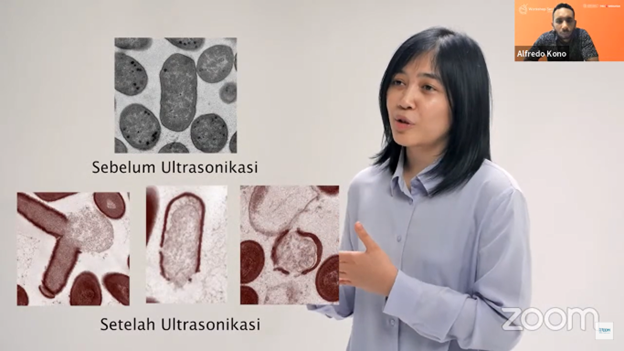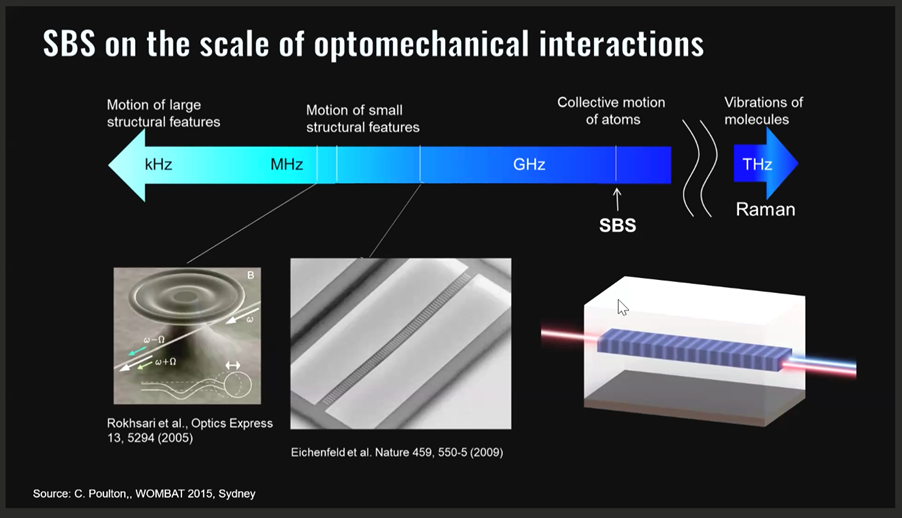ITB Researchers Develop Food Sterilization Technology with Ultrasonic Waves
By Asep Kurnia, S. Kom
Editor Asep Kurnia, S. Kom

BANDUNG, itb.ac.id — The IRCS (Institute for Research and Community Service) ITB Workshop Series held on Wednesday (5/9/2022) was themed as "Ultrasound: An Alternative Method to Kill Bacteria and Keep Your Food Safe". This theme was presented by a SLST (School of Life Sciences and Technology) ITB Research Center for Bioscience and Biotechnology research lecturer Maya Fitrianti, Ph.D.. Since 2022, LPPM has changed the concept of its workshop series to the form of scientific communication with the aim of making scientific content easier for the general public to grasp.
In the beginning of her presentation, Maya showed data from WHO which stated that there are more than 200 types of diseases that are transmissible through food. These diseases are results of bacterial contamination on food ingredients, starting from harvesting and post-harvesting, processing, until when the food is served. Bacterial contamination that is not handled properly can cause food ingredients to become unfit for consumption, thus increasing the amount of food lost and food waste.
To anticipate this, humans have developed sterilization and food preservation technology since 1.5 million years ago through primitive processes. In modern times such as now, one of the most advanced methods of food sterilization is sterilization using ultrasonic waves. At frequencies below the Megahertz (MHz) unit, ultrasonic waves are called power ultrasound which can play a role in the homogenization or in the cell division process. Meanwhile, for Megahertz units and above, ultrasonic waves can be used as a diagnostic tool, so they are called diagnostic ultrasound.
“My team and I are trying to learn more about the effect of these ultrasonic waves on bacteria, and about the damage of said bacterial cell structure after we give the ultrasonic wave treatment. So, we want to know beforehand how these bacteria break down fundamentally. This will later be applied to sterilize various types of food ingredients,“ Maya said.
The first step in starting this research was to make a specific ultrasonication device prototype that can work in every ultrasonic wave range. Modifications to the device used were to determine the side effects of each frequency range on the bacterial cell structure. Identification of bacterial cell damage was carried out both experimentally and also through modeling. The experimental results using the ultrasonication device prototype showed that bacterial cells will get damaged and die after the ultrasonication process. Through modeling, there were two schemes that explained the damage process on the bacterial cell structure. The first model explained that bacterial cells bursting spontaneously are called the bursting mode. The second model described that bacterial cell damage that begins with the formation of holes or pores are called the perforation mode.
“To test the results, we used several samples of beverages such as milk and fruit juices. The result was that after the milk and fruit juices were ultrasonically treated, it turned out that 99.9% of the bacteria in the sample could die. Meanwhile, the fat and protein content in the milk are not lost. The results of the experiments using fruit juice samples also showed that its nutrition was maintained,” Maya explained.
As a considerably new technology, sterilization using ultrasonication still faces several challenges. Underlying questions related to its utilization still need to be explored and developed, including its practicality, efficiency, and effectiveness. On the other hand, research in this field can foster the spirit of collaboration from different fields of science in order to improve existing concepts and methods.
“It is not impossible that alternative technologies such as ultrasonic waves can also help preserve food better. This method could be one of the solutions to reduce food loss and food waste levels in Indonesia and the world.”
Reporter: Hanifa Juliana (Urban and Regional Planning, 2020)
Translator: Hanna Daniela Ayu (Aerospace Engineering, 2021)


.jpeg)
.jpg)
.jpg)
.jpg)

